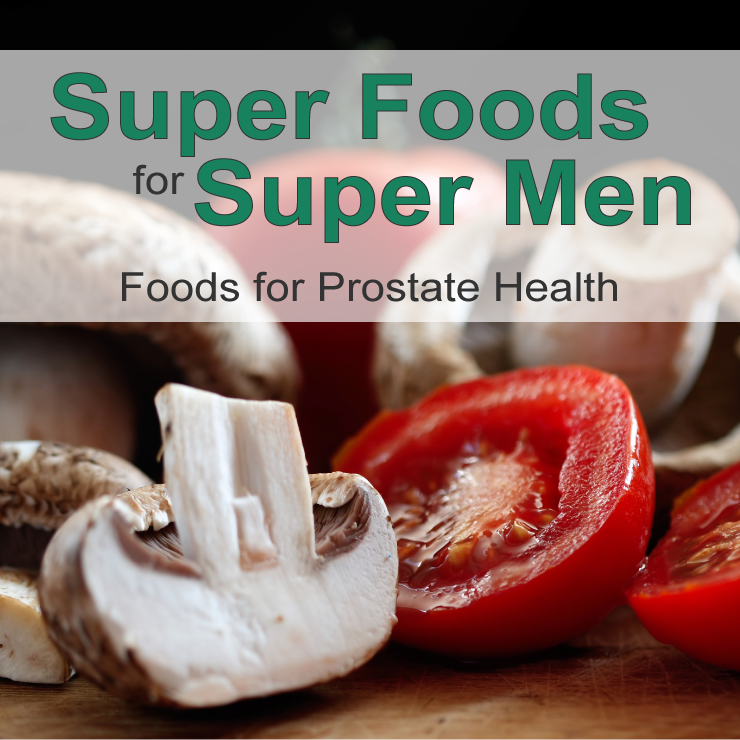 November in the ELLICSR Kitchen is prostate cancer awareness month. We are teaming up with
Prostate Cancer Canada to bring you nutrition and cooking classes for prostate health, featuring recipes that are healthy and tasty for prostate cancer survivors and family and friends, too!
November in the ELLICSR Kitchen is prostate cancer awareness month. We are teaming up with
Prostate Cancer Canada to bring you nutrition and cooking classes for prostate health, featuring recipes that are healthy and tasty for prostate cancer survivors and family and friends, too!
Prostate cancer is the most common cancer in Canadian men, but what can be done to lower your risk? Research shows that about 1 in 10 cases of prostate cancer are related to diet1. Choosing a diet that is mostly food that comes from plants and is low in processed foods, sugar and red meat and getting regular exercise helps lower your risk for several types of cancer, including prostate cancer.
Here are some great ways that healthy eating can help lower prostate cancer risk:
1. Achieve and Maintain a Healthy Weight
Not only does getting and keeping a healthy body weight lower your risk of developing prostate cancer, but it can also help prevent other cancers from developing and may prevent the prostate cancer from coming back2-3.
Cancer survivors are at a higher risk of developing other chronic diseases, such as heart disease and type 2 diabetes. By leading a healthy lifestyle, you also lower your risk of developing some of these other problems too.
Several large research studies have shown that being overweight and having a higher body mass index (BMI) increases risk of getting prostate cancer again4. All the more reason to learn about healthy eating and develop the skills you need to choose nutritious foods and prepare delicious meals! See
my article on healthy weights for tips on how to get to a healthy body weight.
2. Love your Lycopene
Lycopene is a pigment that gives red fruits their colour. This pigment (also called carotenoid) is a powerful antioxidant, with twice the antioxidant activity of vitamin A. Some research studies suggest that diets high in lycopene are associated with a lower risk of prostate cancer and heart disease4.
Lycopene has been shown to have anti-inflammatory effects, which might partly explain why men with higher levels of lycopene in the blood have been shown to have a lower risk of heart disease than men with low levels of lycopene5.
Food sources: Tomatoes are excellent sources of lycopene. Cooked tomatoes contain up to 2.5 times as much lycopene as raw tomatoes, because the heat makes the lycopene more available. Adding some heart-healthy fat such as olive oil to your tomato sauce with help you absorb even more lycopene. Watermelon, apricots, guava, papaya, and pink grapefruit are also good sources.
Recipes: For maximum lycopene power, try our
Nonna’s Tomato Sauce – it works great in
Eggplant Involtini (stuffed with ricotta cheese).
3. Savour your Selenium
Selenium is a mineral that works as an antioxidant, particularly when paired with vitamin E. Selenium is important for a healthy immune system as it is needed to build white blood cells. It also plays a role in thyroid function and testosterone production, which affects prostate growth.
Studies have shown that selenium may help lower prostate cancer risk. A long-term study found that men with the highest selenium levels were 48% less likely to develop advanced prostate cancer than men with the lowest levels6. Some smaller studies have found a link between eating foods rich in selenium and lower risk of colon and stomach cancer.
Brazil nuts are the highest food source of selenium. Just one nut provides 100% of the selenium you need in a day. Mushrooms, cottage cheese and oysters are also good sources.
Recipes: Try our
Garlic and Rosemary Roasted Nuts and our
Forest Mushroom Soup with Soba Noodles.
At ELLICSR we make nutrition and healthy eating fun! This November we are bringing you nutrition and cooking classes devoted to healthy eating for prostate health three Thursdays in a row.
Want to taste what we’re cooking up? Attend our cooking demos in person at ELLICSR, Thursday November 7th, 14th and 21st at 12:15 pm ET. Here’s where you can
find us. See you there!
If you can’t make it in person, not to worry! Watch our demo online (Live or whenever you like) at
ELLICSR Kitchen and join us on Twitter
@ELLICSRkitchen for tips and recipes, and even answers to questions you may have.
References
-
World Cancer Research Fund / American Institute for Cancer Research. (2007). Food, Nutrition, Physical Activity, and the Prevention of Cancer: a Global Perspective. Washington DC: AICR.
-
Asmar, R., Beebe-Dimmer, J. L., Korgavkar, K., Keele, G. R., & Cooney, K. A. (2012). Hypertension, obesity and prostate cancer biochemical recurrence after radical prostatectomy. Prostate cancer and prostatic diseases, 16(1), 62-66;
-
Joshu, C. E., Mondul, A. M., Menke, A., Meinhold, C., Han, M., Humphreys, E. B., ... & Platz, E. A. (2011). Weight gain is associated with an increased risk of prostate cancer recurrence after prostatectomy in the PSA era. Cancer Prevention Research, 4(4), 544-551.
-
Cao, Yin, and Jing Ma. "Body Mass Index, Prostate Cancer–Specific Mortality, and Biochemical Recurrence: a Systematic Review and Meta-analysis." Cancer Prevention Research 4.4 (2011): 486-501.
-
Rao, A. V., & Agarwal, S. (2000). Role of antioxidant lycopene in cancer and heart disease. Journal of the American College of Nutrition, 19(5), 563-569.
-
Peters, U., Foster, C. B., Chatterjee, N., Schatzkin, A., Reding, D., Andriole, G. L., ... & Hayes, R. B. (2007). Serum selenium and risk of prostate cancer—a nested case-control study. The American journal of clinical nutrition, 85(1), 209-217.
